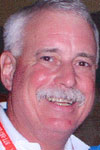In August 2009, the Department of Homeland Security (DHS) initiated its long-awaited series of Train-the-Trainer programs to develop leaders for the Command and General Staff positions in the federal government’s Incident Command System (ICS). With this expansion of ICS training come a number of important decisions and commitments that must be addressed in the next several months.
Since 2004, U.S. emergency-response personnel and organizations have been striving to complete the so-called “NIMS-prescribed” ICS training in order to ensure that they qualify as being “NIMS-compliant” – i.e., that they adhere to the guidelines postulated in the National Incident Command System. Extensive efforts have been undertaken to complete training in the ICS “core” programs (ICS-100 through ICS 400). At least part of the motive for completing the ICS training as soon as possible is to ensure ongoing eligibility for federal funding through the DHS grant programs. For that reason the vigorous efforts expended have sometimes been referred to as “training for compliance” rather than training for competence.
Nonetheless, the coming year may prove to be a true benchmark of sorts for measuring the evolution of the NIMS guidelines. With additional and more advanced training becoming available it seems likely that new challenges also may surface. There already is an acknowledged need to expand the national capacity to provide better incident-command capabilities to manage the spectrum of possible emergencies that may occur. To meet that challenge the DHS has initiated an aggressive effort to develop highly capable All-Hazards Incident Management Teams (AHIMTs). Thanks to the availability of the ICS position-specific training courses, cities, states, regions, and numerous organizations and agencies must now determine the extent to which they need – and will make a commitment to establishing – an AHIMT.
Building Blocks, Commitment, and a Long-Range Plan
The ICS position-specific training already underway would be an integral building block in the process. The position-specific programs include, but are not limited to, training for such positions as incident commander, safety officer, public information officer, liaison officer, and the chiefs of the AHIMT planning, logistics, finance/administration, and operations sections.
The training of quality individuals to perform well in all of those (and other) positions is an important and necessary first step – but no more than that. In order for an AHIMT to be formed, and to carry out the responsibilities it will be assigned, several additional steps must be taken. To begin with, the individuals selected for the training, and their sponsoring departments and organizations, must make a long-term commitment not only to develop the capabilities needed but also to maintain those capabilities far into the future. The overall long-range plan must therefore include: (a) identifying individuals who will be assigned, or accepted, for AHIMT membership by judging them on their demonstrated capabilities; and (b) determining their probable availability for assignment or deployment.
The selection decisions that must be made should be based on the individual trainee’s demonstrated competencies, regardless of his or her organizational affiliation and/or current rank. In simple terms, someone who already is the leader of an already existing unit of some type may not be best suited for a command or general-staff position in a local, regional, or state IMT – or, for that matter, may not be the best suited or most qualified for an AHIMT post at the same level. Moreover, if a current chief is expected to serve in an emergency operations center (EOC), he or she cannot also serve in the field with an IMT.
A Gridiron Analogy: All the Way to the Super Bowl
The process for developing a cohesive as well as fully qualified IMT can be compared to developing a winning football or baseball team. Almost all successful teams (no matter what sport is involved) follow much the same sequence, which includes, but is not limited to: (a) recruiting and screening the best candidates; (b) carrying out conditioning training; (c) filling position assignments, and practicing individual skills in those positions; and (d) escalating to whole-unit practices and real-time scrimmages – while also, throughout the entire process, making continuous assessments and adjustments while preparing for the opening game. For an AHIMT, of course, the “game” may be extremely dangerous, and the members of the team will seldom if ever know when it will start.
The first step in developing a strong team is to identify the players who will form the team. The players must demonstrate their individual knowledge and skills in order to make the roster. The individuals selected for the team start with conditioning – i.e., the position-specific training. Once that phase is completed, the members should develop experience through a process known as “shadowing” (which corresponds, more or less, to position practice). Shadowing gives the individual trainee the opportunity to practice the responsibilities of his/her position under the supervision, and with the guidance, of others who are already experienced in the duties assigned.
Verification of the development of individual candidates is accomplished through the process of completing what are called Position Task Books (PTBs). The PTBs verify that the performance competencies required for each IMT position have been satisfactorily demonstrated. However, the process is not complete when a trainee or even a group of trainees complete their PTBs. Two additional steps are necessary.
First, the team must develop depth for each position (the same way a football team would make sure that a backup quarterback is available to fill in if and when needed). After the decision is made to develop an AHIMT, therefore, several individuals, usually, must be trained and qualified in each command and general staff position in order to ensure that the team as a whole will be a fully functional unit if and when called upon.
Second, the team must practice together periodically. During those practices, the members’ basic capabilities must be reinforced and identified, and any weaknesses discovered must be promptly corrected to prevent an adverse impact on overall team performance. Practical exercises, like football scrimmages, are needed to prepare the team for future real-life assignments. Here, the old sports adage that “A team plays like it practices” should serve as valuable guidance. Optimally, an IMT will practice together at least once a year, and those full-scale practices should include going through team transitions and shift changes. As often as possible, moreover, even in situations in which deployment of the IMT as a whole is not essential – the managing of a common emergency situation, for example – the entire IMT team might be activated and work together both to practice team activities and to enhance individual position capabilities.
An Unending Journey Toward an Always Distant Goal
The team has a number of other obligations that round out the picture. It must establish and exercise call-up procedures regularly, for example, to ensure that the individuals, and the team as a whole, can be mobilized and deployed in a timely manner. It also must conform rigorously to state and national AHIMT standards, particularly if it is likely to be made available for interstate deployments.
In short, the building of a fully qualified AHIMT is a long, difficult, and sometimes tedious process. But the task facing emergency planners does not stop there. Within the next several years it is reasonable to expect continued evolution of the already high standards required. As in many other aspects of life, each step in the process is never the last step, but simply the next one in what may well be an unending journey.
The year 2010 may therefore indeed be remembered as “the year of the IMT” – but the bigger challenge will be to ensure that in 2011, and the years beyond that, the NIMS and IMTs will still not only be around but will be more competent and more qualified as well.

Stephen Grainer
Stephen Grainer is the chief of IMS programs for the Virginia Department of Fire Programs (VDFP). He has served in Virginia fire and emergency services and emergency management coordination programs since 1972 – in assignments ranging from firefighter to chief officer. He also has been a curriculum developer, content evaluator, and instructor, and currently is developing and managing the VDFP programs needed to enable emergency responders and others to meet the National Incident Management System compliance requirements established by the federal government. From 2010 to 2012, he served as president of the All-Hazards Incident Management Teams Association.
- Stephen Grainerhttps://domesticpreparedness.com/author/stephen-grainer
- Stephen Grainerhttps://domesticpreparedness.com/author/stephen-grainer
- Stephen Grainerhttps://domesticpreparedness.com/author/stephen-grainer
- Stephen Grainerhttps://domesticpreparedness.com/author/stephen-grainer






